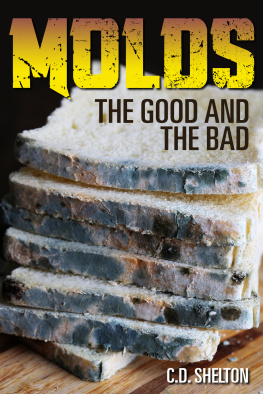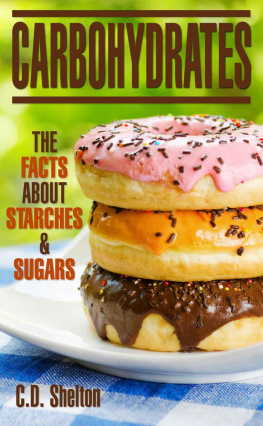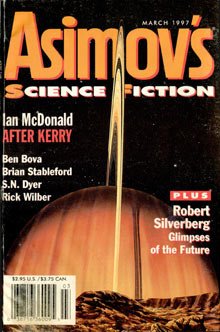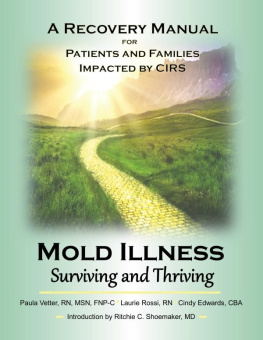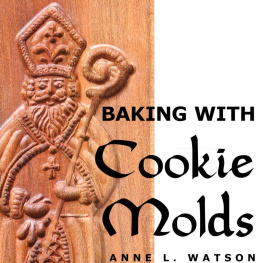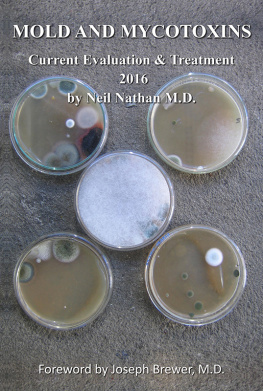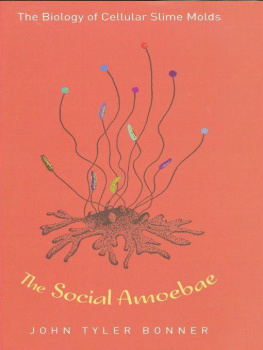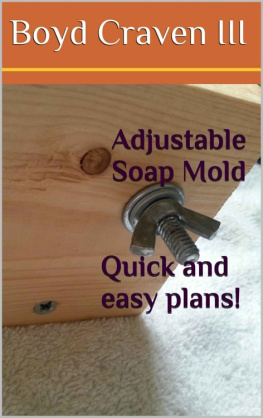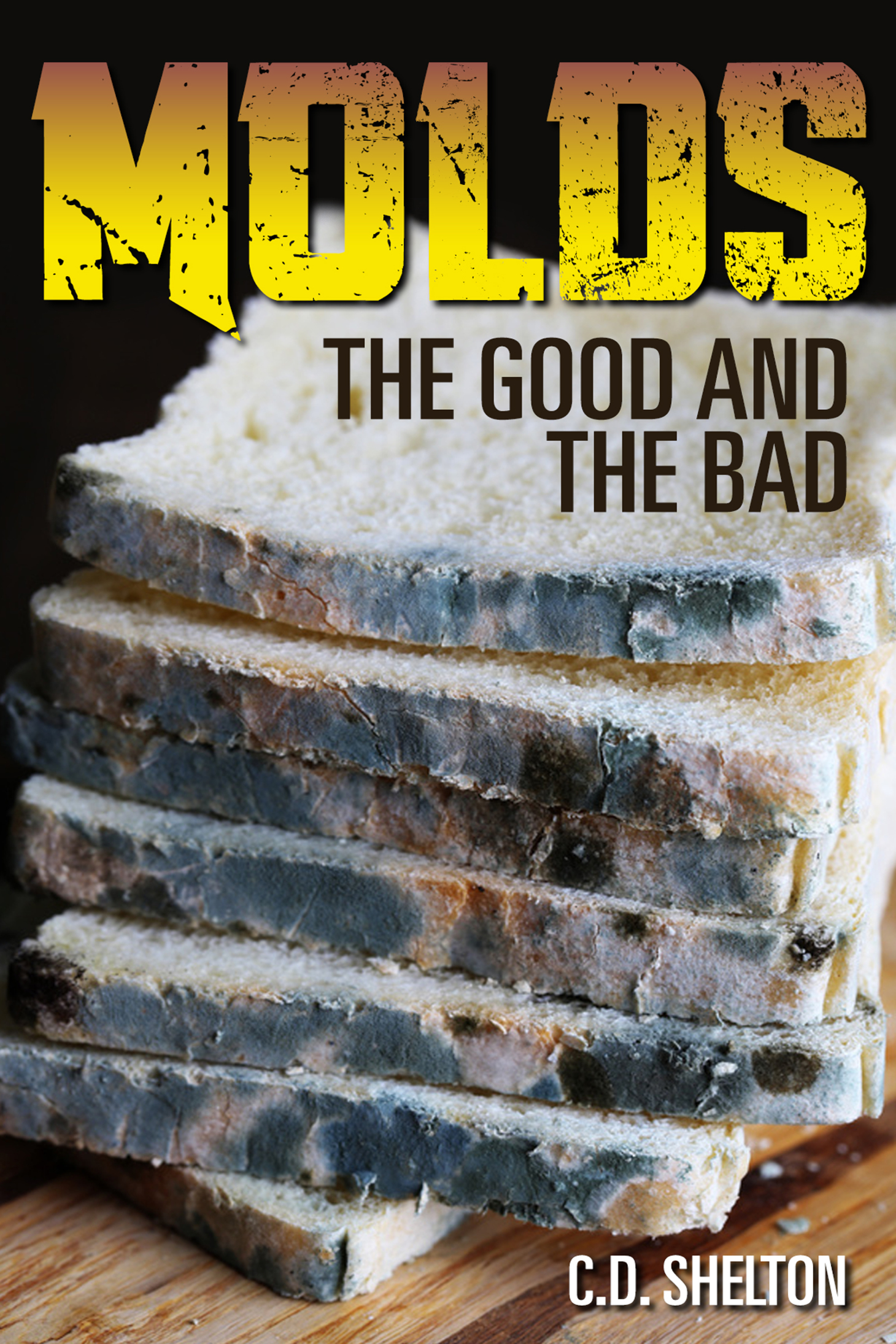Table of Contents
Molds: The Good and The Bad
By C.D. Shelton
Copyright
Molds: The Good and The Bad by C.D. Shelton
2014 by C.D. Shelton. All rights reserved.
No part of this book may be reproduced in any written, electronic, recording, or photocopying without written permission of the publisher or author. The exception would be in the case of brief quotations embodied in the critical articles or reviews and pages where permission is specifically granted by the publisher or author.
Although every precaution has been taken to verify the accuracy of the information contained herein, the author and publisher assume no responsibility for any errors or omissions. No liability is assumed for damages that may result from the use of information contained within.
This eBook is a shortontimeebooks.com publication.
Preface
Mold comes in many different forms and colors. Just because a mold is discovered on your property and is dark in color doesnt necessarily mean the mold is of a variety that is toxic. On the other hand, the discovery of mold (any variety) means there is a moisture problem in your home.
Molds cant grow without moisture. So the first issue is to find and stop the moisture source. The second issue is to identify the type of mold. There are many mold inspectors listed in the yellow pages, so it might be wise to get at least two opinions from professional mold inspectors, as there are some unscrupulous people in the mold clean-up business.
This eBook will discuss the various types of molds, mold removal using common household cleaning products and natural methods, as well as examine various scams that can be perpetrated on the unwary homeowner by mold clean-up operators and inspectors.
What is Mold?
Mold is a fungus that grows in the form of multicellular filaments called hyphae. In contrast, fungi that can adopt a single celled growth habit are called yeasts.
Molds are a large and taxonomically (classification) diverse number of fungal species where the growth of hyphae results in discoloration and a fuzzy appearance, especially on food. The network of these tubular branching hyphae, called mycelium is considered a single organism. The hyphae are generally transparent, so the mycelium appears like very fine, fluffy white threads over the surface. Cross-walls (septa) may delimit connected compartments along the hyphae, each containing one or multiple, genetically identical nuclei. The dusty texture of many molds is caused by profuse production of asexual spores (conidia) formed by differentiation at the ends of hyphae. The mode of formation and shape of these spores is traditionally used to classify molds. Many of these spores are colored, making the fungus much more obvious to the human eye at this stage in its life-cycle.
Moldy Tomato
Molds are considered to be microbes and do not form a specific taxonomic or phylogenetic grouping, but can be found in the divisions Zygomycota and Ascomycota. In the past, most molds were classified within the Deuteromycota.
Molds cause biodegradation of natural materials, which can be unwanted when it becomes food spoilage or damage to property. They also play important roles in biotechnology and food science in the production of various foods, beverages, antibiotics, pharmaceuticals and enzymes. Some diseases of animals and humans can be caused by certain molds: disease may result from allergic sensitivity to mold spores, from growth of pathogenic molds within the body, or from the effects of ingested or inhaled toxic compounds (mycotoxins) produced by molds.
Good Molds
Food Production
The Kji molds are a group of Aspergillus species, notably Aspergillus oryzae , and secondarily A. sojae , that have been cultured in eastern Asia for many centuries. They are used to ferment soybeans and wheat mixture to make soybean paste and soy sauce. Koji molds break down the starch in rice, barley, sweet potatoes, etc., a process called saccharification in the production of sake , shch and other distilled spirits. Koji molds are also used in the preparation of Katsuobushi.
Red rice yeast is a product of the mold Monascus purpureus grown on rice, and is common in Asian diets. The yeast contains several compounds collectively known as monacolins, which are known to inhibit cholesterol synthesis. A study has shown that red rice yeast used as a dietary supplement, combined with fish oil and healthy lifestyle changes, may help reduce "bad" cholesterol as effectively as certain commercial statin drugs.
Some sausages, such as salami, incorporate starter cultures of molds to improve flavor and reduce bacterial spoilage during curing. Penicillium nalgiovense , for example, may appear as a powdery white coating on some varieties of dry-cured sausage.
Other molds that have been used in food production include:
Fusarium venenatum quorn (alternative to meat)
Geotrichum candidum cheese
Neurospora sitophila oncom (fermented food)
Penicillium spp. various cheeses including Brie and Blue cheese
Rhizomucor miehei microbial rennet for making vegetarian and other cheeses
Rhizopus oligosporus tempeh (fermented drink)
Pharmaceuticals From Molds
Alexander Fleming's accidental discovery of the antibiotic penicillin involved a Penicillium mold called Penicillium notatum (although the species identity is disputed as possibly being Penicillium chrysogenum or Penicillium rubens ). Fleming continued to investigate Penicillin, showing that it could inhibit various types of bacteria found in infections and other ailments, but was unable produce the compound in large enough amounts necessary for production of a medicine. His work was expanded by a team at Oxford University; Clutterbuck, Lovell, and Raistrick, who began to work on the problem in 1931. This team was also unable to produce the pure compound in any large amount, and found that the purification process diminished its effectiveness and negated the anti-bacterial properties it had.
Industrial-scale production of crystallized penicillin was developed during 1941-1944 by the USDA and by Pfizer.
Several statin cholesterol-lowering drugs (such as Lovastatin, from Aspergillus terreus ) are derived from molds.
The immunosuppressant drug cyclosporine, used to suppress the rejection of transplanted organs, is derived from the mold Tolypocladium inflatum .
Mold Reproduction
Biology
There are thousands of known species of molds, which have diverse lifestyles including saprotrophs, mesophiles, psychrophiles and thermophiles and a very few opportunistic pathogens of humans. They all require moisture for growth and some live in aquatic environments. Like all fungi, molds derive energy not through photosynthesis, but from the organic matter on which they live, utilizing heterotrophy. Typically, molds secrete hydrolytic enzymes, mainly from the hyphal tips. These enzymes degrade complex biopolymers such as starch, cellulose and lignin into simpler substances which can be absorbed by the hyphae. In this way, molds play a major role in causing decomposition of organic material, enabling the recycling of nutrients throughout ecosystems. Many molds also synthesize mycotoxins and siderophores, which together with lytic enzymes inhibit the growth of competing microorganisms.

